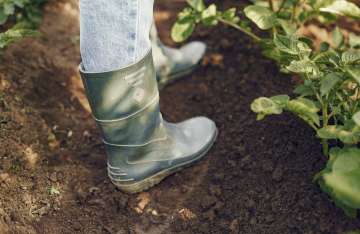Growing your own food, and fruit amongst it, gained much popularity in the recent times, and we would add for good reason, too. An access to healthy, unprocessed food whose origin you are sure about, and a hobby practiced in the healthy, naturalistic environment may mean everything to number of people suffocated by the cold, urban environment. Still, no matter how these perks sound great, people usually tend to be intimidated by the number of obligations orchard maintenance involves. These fears, however, are mostly unfounded. Here are few tips which will make your orchard maintenance much easier.
Pruning the Branches
This is the first out of three main orchard maintenance duties, and arguably the easiest one, although it can be divided in two separated duties – formative pruning, and maintenance pruning, all depending on the fruit age.
-
Formative Pruning
Formative pruning is usually applied on young plants. The good news is that some of them (cherries and plums) do not need as much pruning to develop balanced shape as apples, and pears, so you will use formative actions very sparingly. What you should do in both cases is to cut down, all the “competing” stems, and keep the lower branches somewhere bout 2 meters above the ground. Branches lower down the trunk should be reduced to two or three buds in length.
-
Maintenance Pruning
This activity takes over once fruit is well-shaped, and the need for fruit production outweighs the need to strengthen the tree. Its aims are to allow more air and light around the tree and replace old branches with the new ones. You will do that by removing all the diseased, dead, and damaged branches, as well as those which are crossing over and rubbing. Do not, however, cut more than 25% of branches each year.
Protecting the Fruit from Pests
If you are living in an area populated with enough birds, they will do majority of this job, but taking few extra, precautionary measures can do you no harm. For instance, you can even prevent your flying friends from taking their share of spoils with bird netting. Insects will require more sophisticated approach, so using the insecticides may be your only option. Do not worry, though, even the organic farmers are using this method for fighting the insects, and there is a number of ways you can prepare natural insecticides. You can easily disperse it later with practical backpack sprayers.
Watering Your Orchard
Draught stress is capable of significantly reducing the fruit size, so if you want big and healthy products, you should make sure that plants are supplied with sufficient amounts of water, especially if you are living in somewhat “dry” area. You should not go overboard, though. Sandy soil may require watering two times a week, while clay may be waterlogged by the same amount of water. The general rule, however, is that smaller trees (0.5 square meters crown) will need only a liter of water a day during the spring, and tree times that amount during the summer. Older trees (3.5 square meter crowns) will require 8.5 liters and 25.5 liters during the spring and the summer respectively. You will determine whether the watering is needed if soil is dry 15-25 centimeters deep, and 10-15 centimeters far from the base of the tree.
As we can see, all those activities are really not that hard. Sure, they require some skill, but that just gives you more reason to start practicing right now. Sooner you develop your orchard maintenance skills, faster you will get your own, home-grown fruit.




